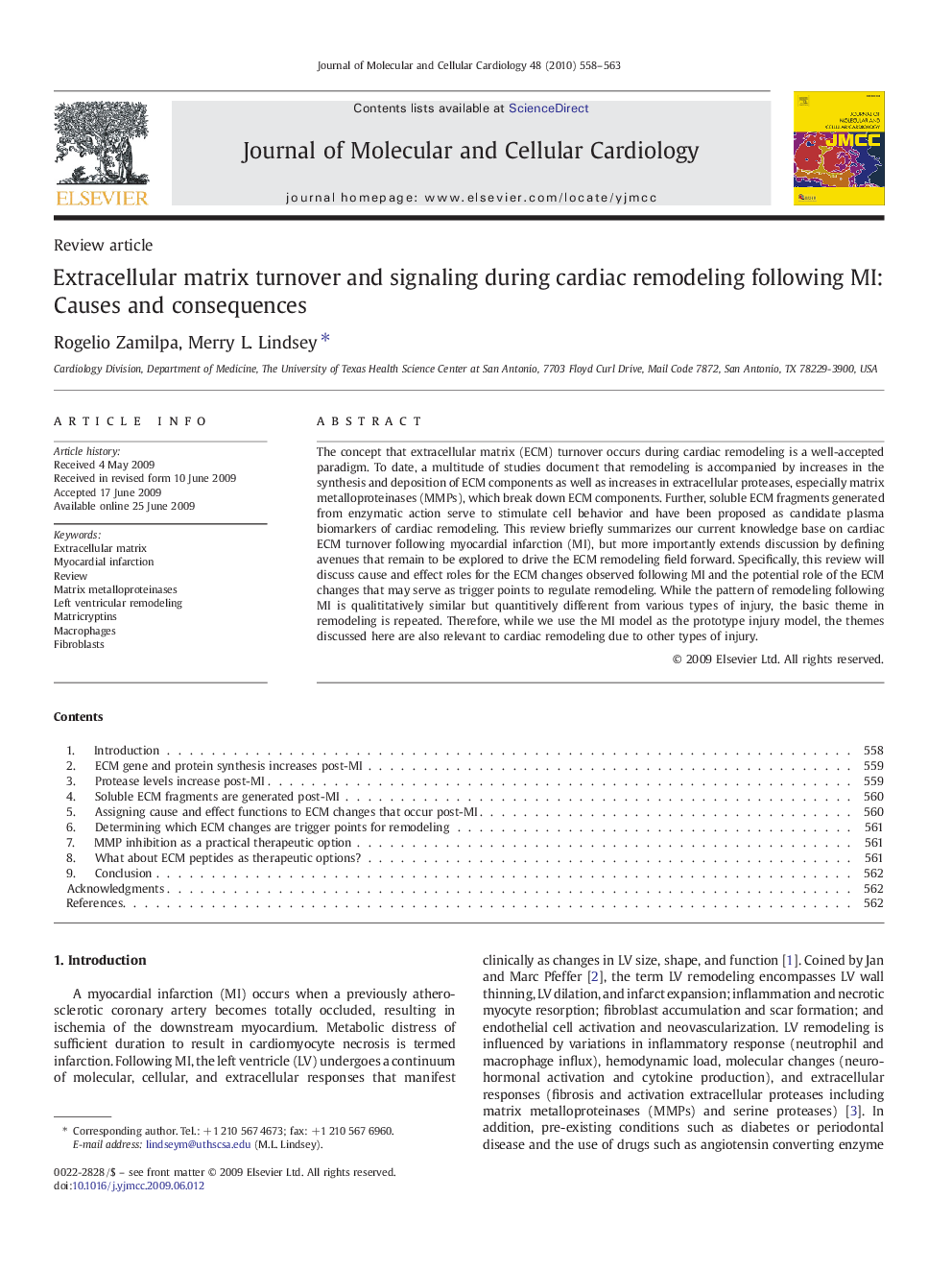| Article ID | Journal | Published Year | Pages | File Type |
|---|---|---|---|---|
| 2191169 | Journal of Molecular and Cellular Cardiology | 2010 | 6 Pages |
The concept that extracellular matrix (ECM) turnover occurs during cardiac remodeling is a well-accepted paradigm. To date, a multitude of studies document that remodeling is accompanied by increases in the synthesis and deposition of ECM components as well as increases in extracellular proteases, especially matrix metalloproteinases (MMPs), which break down ECM components. Further, soluble ECM fragments generated from enzymatic action serve to stimulate cell behavior and have been proposed as candidate plasma biomarkers of cardiac remodeling. This review briefly summarizes our current knowledge base on cardiac ECM turnover following myocardial infarction (MI), but more importantly extends discussion by defining avenues that remain to be explored to drive the ECM remodeling field forward. Specifically, this review will discuss cause and effect roles for the ECM changes observed following MI and the potential role of the ECM changes that may serve as trigger points to regulate remodeling. While the pattern of remodeling following MI is qualititatively similar but quantitively different from various types of injury, the basic theme in remodeling is repeated. Therefore, while we use the MI model as the prototype injury model, the themes discussed here are also relevant to cardiac remodeling due to other types of injury.
